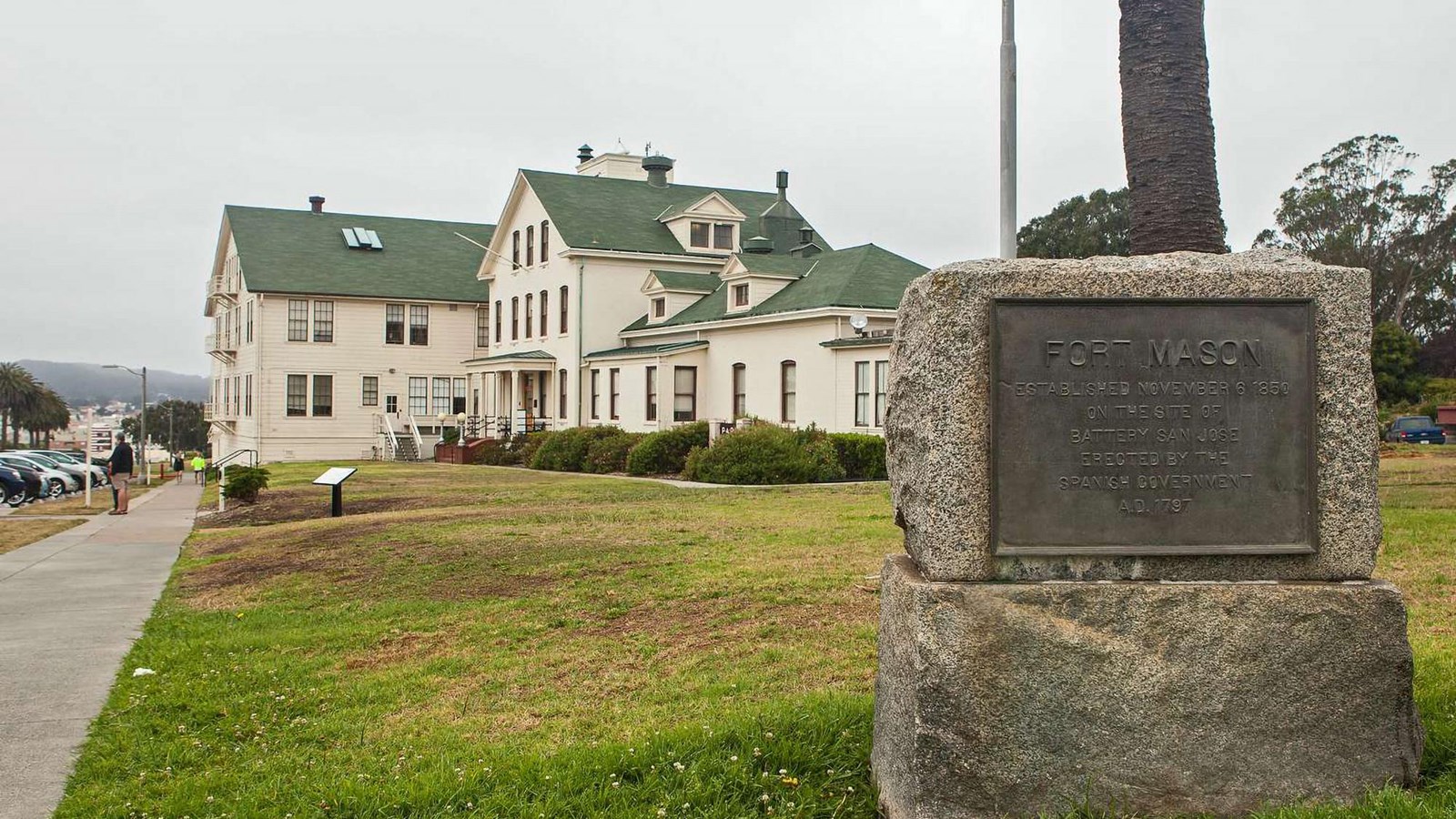Last updated: March 9, 2021
Place
Fort Mason

Chad Beale
Parking - Auto, Trailhead
In its modern incarnation, Fort Mason is a lovely spot to spend an afternoon walking, cycling or just relaxing with great views of the San Francisco Bay, Golden Gate Bridge and the Marin Headlands. There are plenty of places to explore right here, including restaurants and shops at Fort Mason Center on the waterfront. If you have a whole day, Fort Mason is a great location to start a journey to the marina, East Beach and Crissy Field.
Trails at Fort Mason
The Great Meadow features a network of paved paths that lead through the meadow and down to Marina Boulevard. The San Francisco Bay Trail is part of these paths, hugging the coast, beginning at the Municipal Pier near the Maritime Museum and Fisherman's Wharf, and continuing to Crissy Field. The trail is on a gentle slope.
Park Headquarters and Visitor Information Center
Within a stone's throw of many of the park's sites, Fort Mason serves as the headquarters for the Golden Gate National Recreation Area. The Visitor Information Center in Building 201 provides maps, brochures, self-guided tours and park-wide information Monday through Friday, 8:30 AM to 4:30 PM. Further information is available by calling 415 - 561 - 4700.
History: Location, Location, Location
Geography is the key to understanding Fort Mason. Its elevated position overlooking the bay made it a natural choice for a fortification for 200 years. The site served as a point of defense for the Spanish, Mexican, and US forces. As early as 1797, the Spanish built the first military fortification here, Batería de San Jose, armed with five eight-pound cannons. After a successful revolution securing its sovereignty from Spain in 1822, Mexico continued to hold influence in the region until the 1840s. Like the Spanish, the wild frontier of northern California proved difficult for the Mexicans to maintain, and many fortifications fell into disrepair or were abandoned.
After the Bear Flag Revolt in 1846, American forces secured the region that would later become San Francisco. Back then, San Francisco was a town of about 1,000, mostly fur trappers, whalers, fishermen and sailors. It wasn't until gold was discovered in the Sierra Nevadas in 1848 that San Francisco began to boom. Soon it became a launching pad for opportunists looking to make a buck in the tight housing market. Developers bought military land at Fort Mason (then Point San Jose) and constructed private lavish homes for themselves. The area was known as Black Point, home to a vibrant, civic-minded abolitionist community.
The Civil War brought the return of the military to Black Point. It was renamed Point San Jose, and was laid out and constructed to function as a small, self-sufficient town. Point San Jose was different than other posts in that the army officers were stationed in the former Black Point civilian homes instead of living near the main parade ground. In 1882, the post was renamed Fort Mason to honor Colonel Richard Barnes Mason.
Fort Mason continued to be important to local and US history. After the 1906 San Francisco earthquake and fire, Fort Mason functioned as the city's temporary city hall and shelter to hundreds of homeless citizens.
By 1915 and during WWI and WWII, Fort Mason served as the headquarters for the San Francisco Port of Embarkation, the nerve center of a vast network of shipping facilities that spread throughout the Bay Area.
Looking to Move?
Upper Fort Mason offers a unique opportunity to live in historic homes on national park grounds in an urban setting. Rent revenues to the park are used to further rehabilitate historic buildings and fund various improvement projects in the park.
